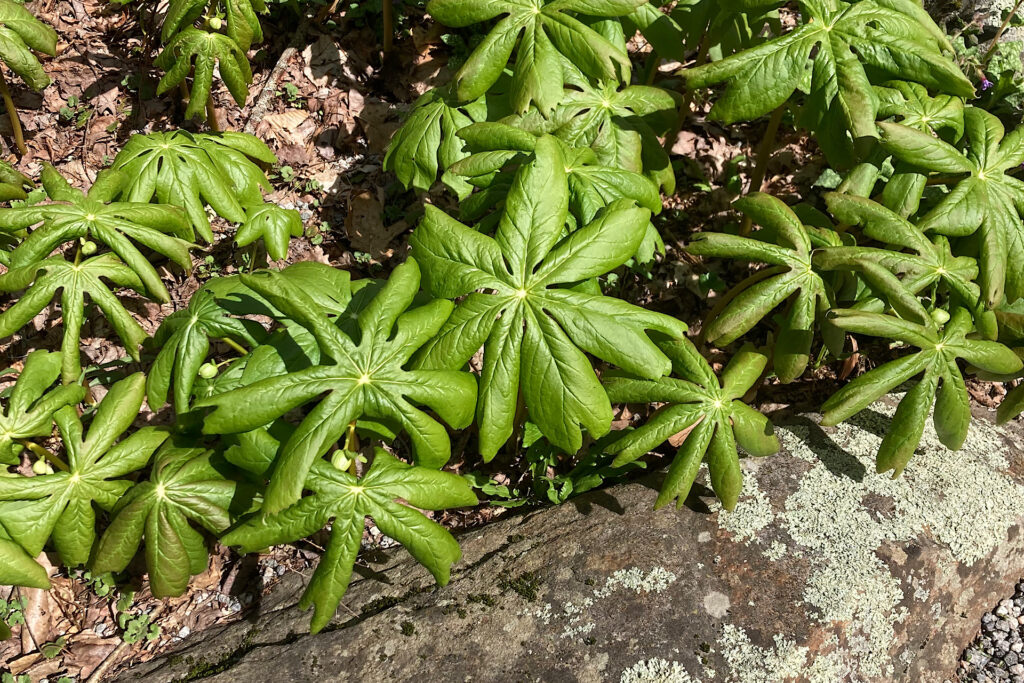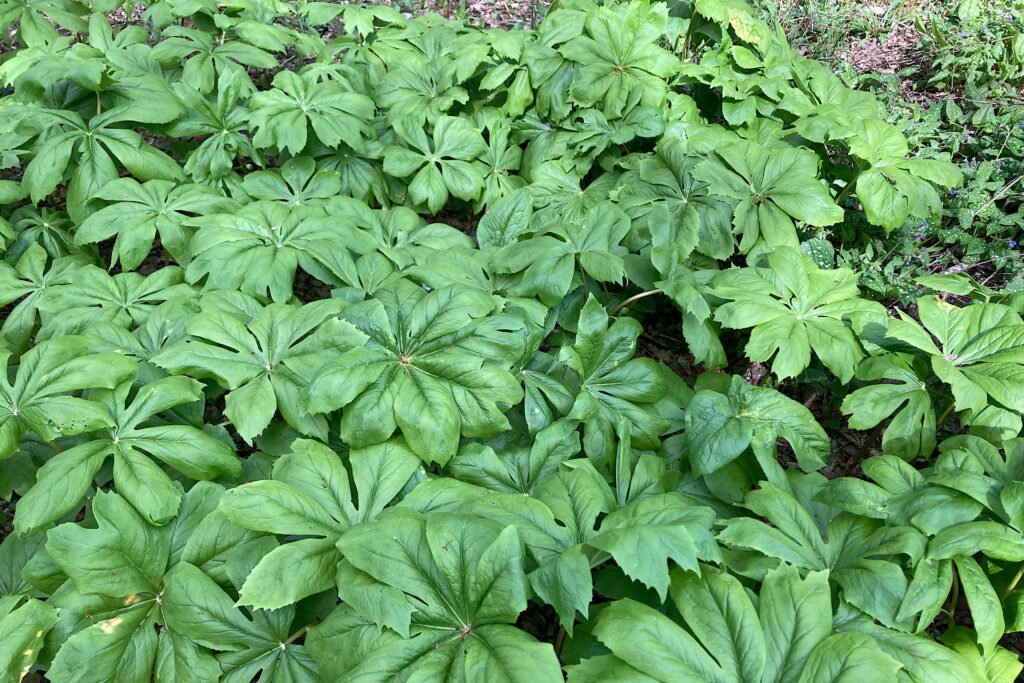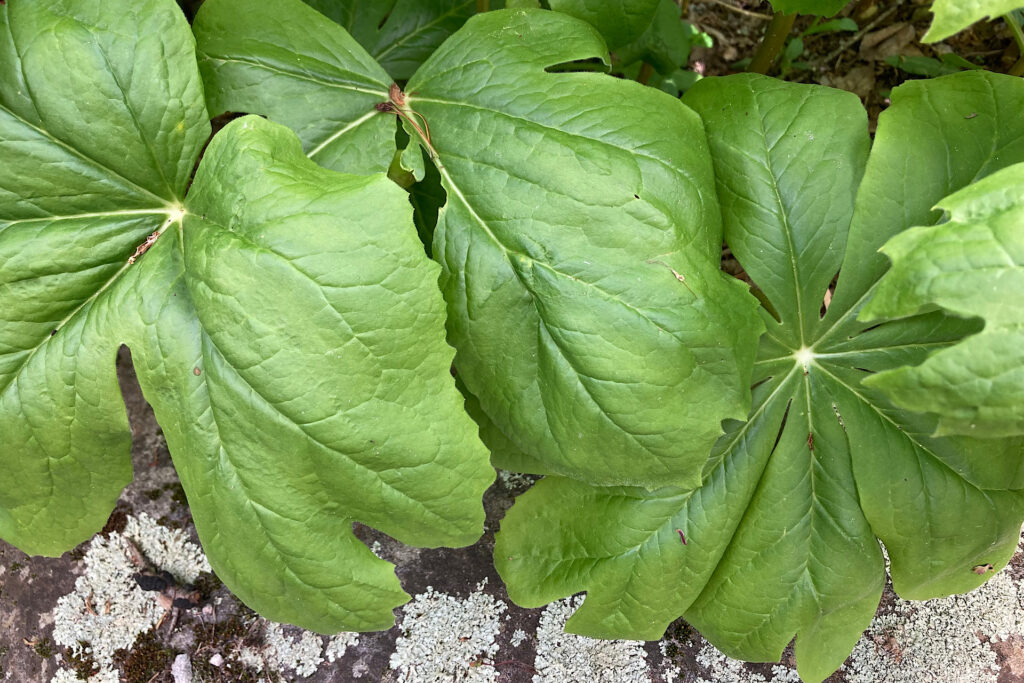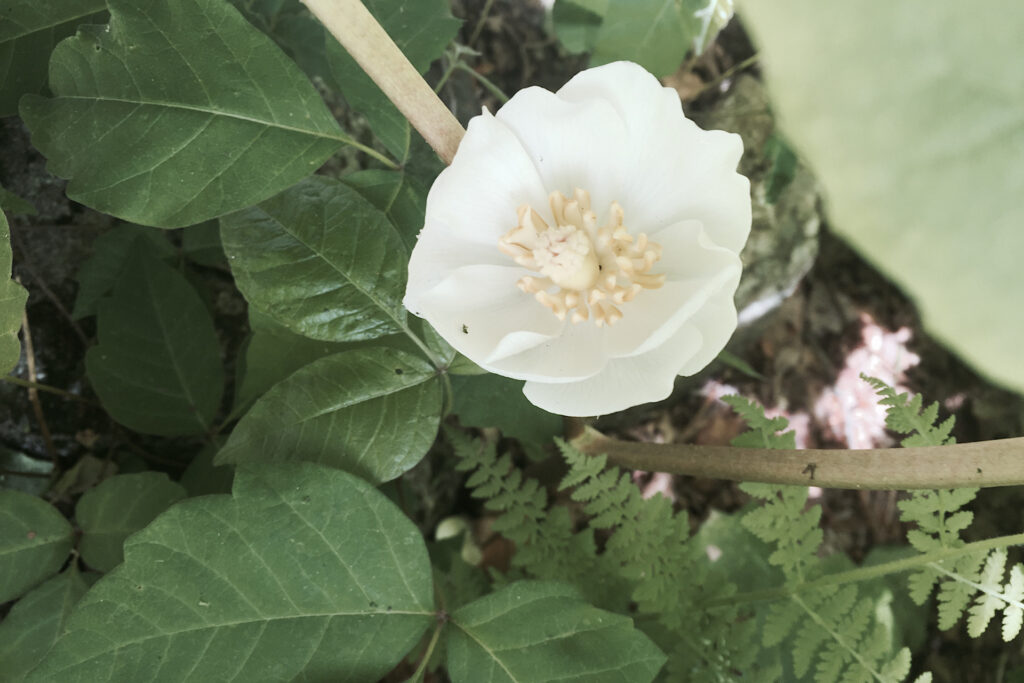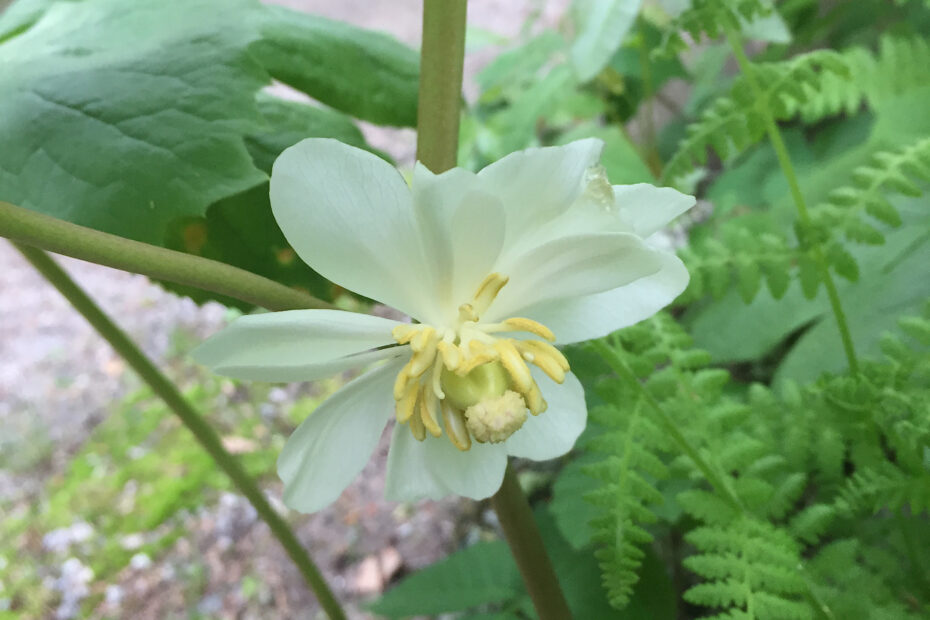When I first introduced the mayapple as a plant in my landscape, I knew nothing about her. My grandmother had a vigorous lot of them by her stonewall and I loved them and I loved her, so they were a natural transplant onto my property. I set them at the edge of my wood line; a smart choice that I didn’t recognize at the time. Mayapples are among my first flowers to appear in the spring (albeit, for a very brief time). They disappear by summer, with all traces of them covered by ferns and other underlying vegetation. The mayapple produces lovely blooms and fruit, which can only be seen by peeking under their leaf canopy. For this reason, I find her to be an exceptionally beautiful introvert revealing a fairyland of an understory.
What is a mayapple plant?
Mayapples are herbaceous perennials (Podophyllum peltatum) that belong to the barberry (Berberidaceae) family of plants. They are also known as:
- Wild Mandrake
- American Mandrake
- Indian Apple
- Pomme de Mai
- Gound Lemon
The “mandrake” botanical association may have taken hold because of a similarity in root structure; but they are an unrelated plant. The more common name of “mayapple” is likely in reference to the apple-blossom-like flower this plant produces during the month of May.
On inspection, the mayapple has two leaves that remain furled until the stem reaches its full height of 1 to 1 1/2 feet. The leaves then unfold into large umbrella-like structures with deeply cut lobes. In April or May, the the plant produces a single, nodding, white to rose-colored flower at the axil of the twin leaf stems. The blossoms are waxy with light green sepals and yellow stamens with white filaments and yellow anthers. Although all other parts of the plant are poisonous, the mayapple sets an edible fruit in early summer that ripens to a rich, golden color. Although the flowers and fruit are showy, they remain hidden as beautiful surprises under the leaf cover.
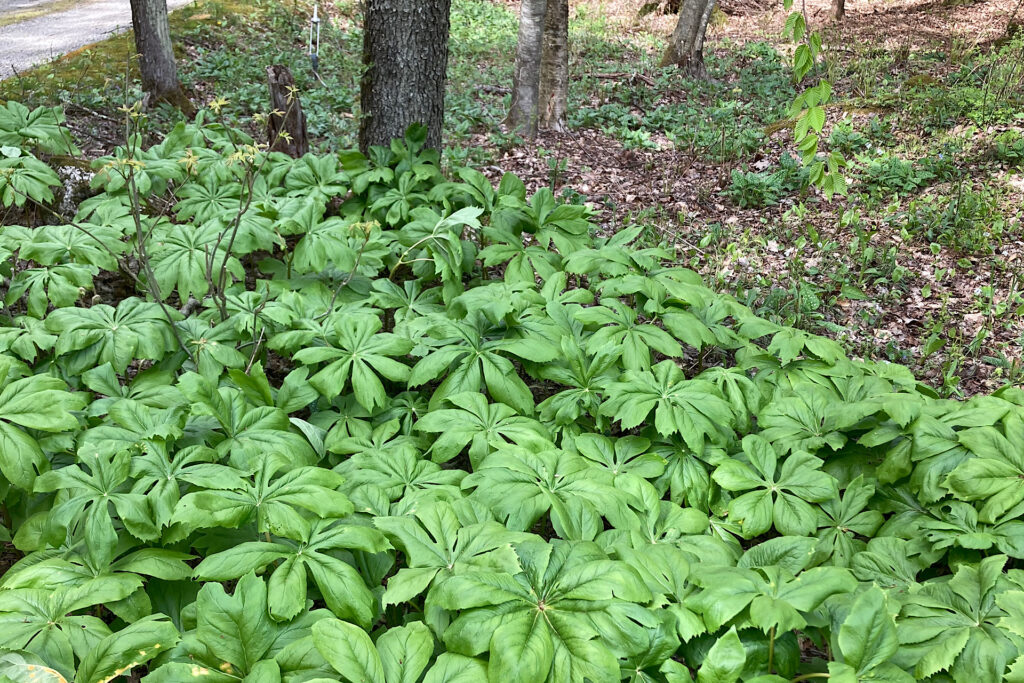
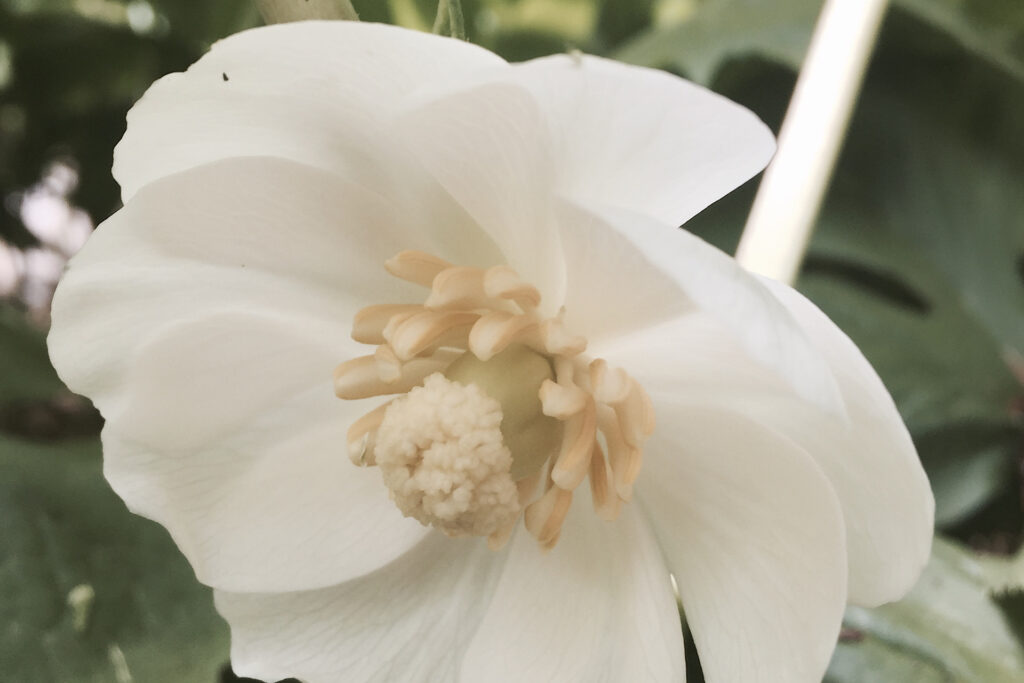
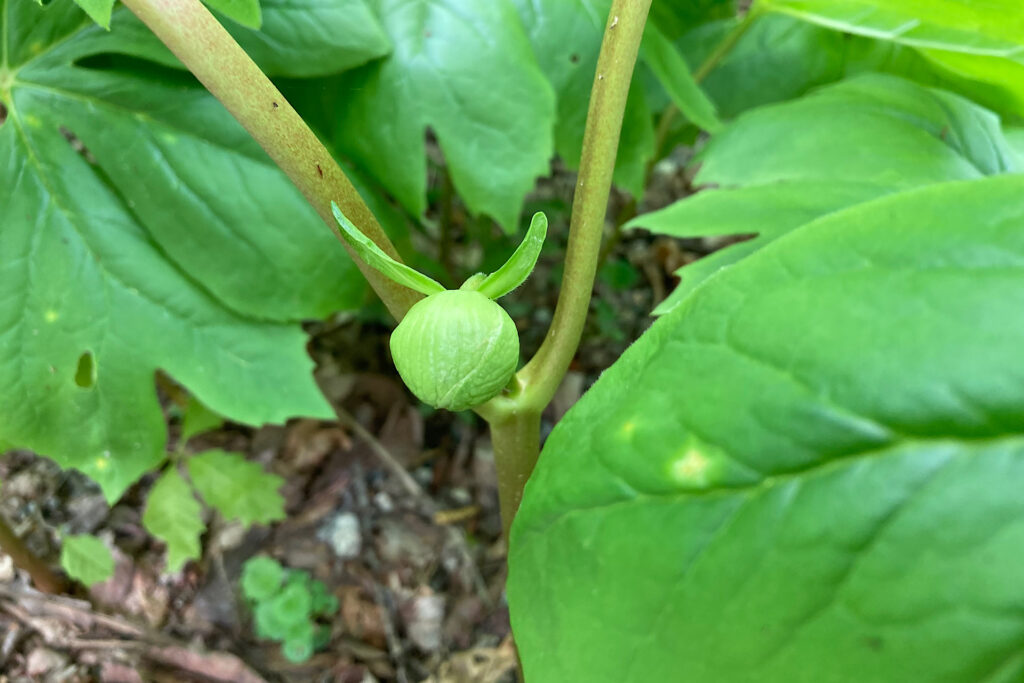
Benefits & history
Aside from being an attractive ornamental plant, I was pleased to learn that mayapples are also a native species to my region and most of eastern North America; making them a beneficial plant for pollinators and local wildlife.
It is wise to reiterate here that the entirety of this plant, with the exception of the fruit, contains podophyllotoxin (a prescription drug ingredient); which is highly toxic when consumed. Although there are recipes online for making mayapple fruit jams and preserves as well as historical information citing medicinal use of the plant by early Native Americans; I do not possess the confidence to recommend any instructional material related to consumption.
I am happy to share, however, the mayapple’s accolades as a beneficial addition to the garden.
- Bloom time is accessible for early-season pollinators.
- Favored by bumblebees and long-tongued bees.
- Attracts box turtles. Turtles eat the fruit and pass the seeds through their digestive systems; where they germinate away from the parent plant.
- Raccoon and opossum may also consume the fruit.
- Deer and rabbit-resistant.
- Juglone-tolerant (can grow near black walnut trees).
- Ideal for naturalizing woodland and native plant gardens.
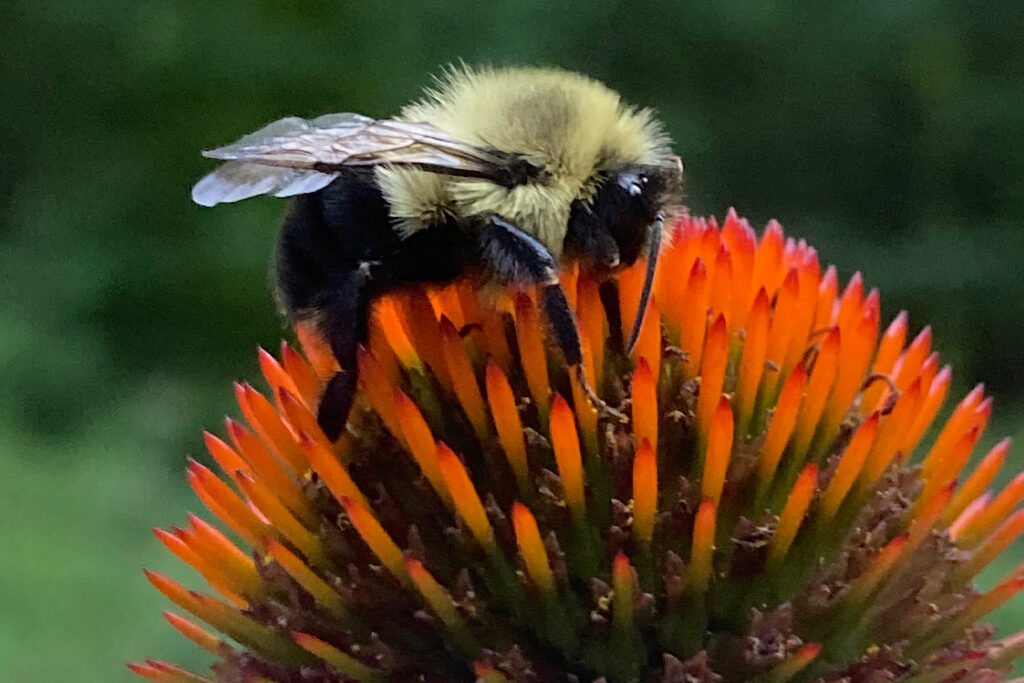
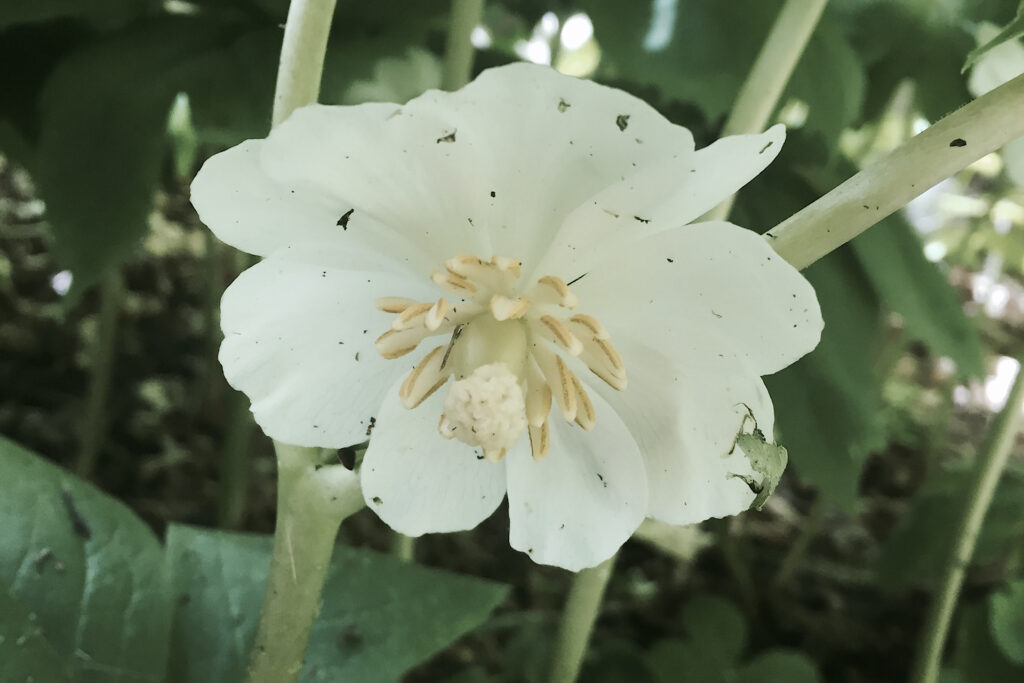
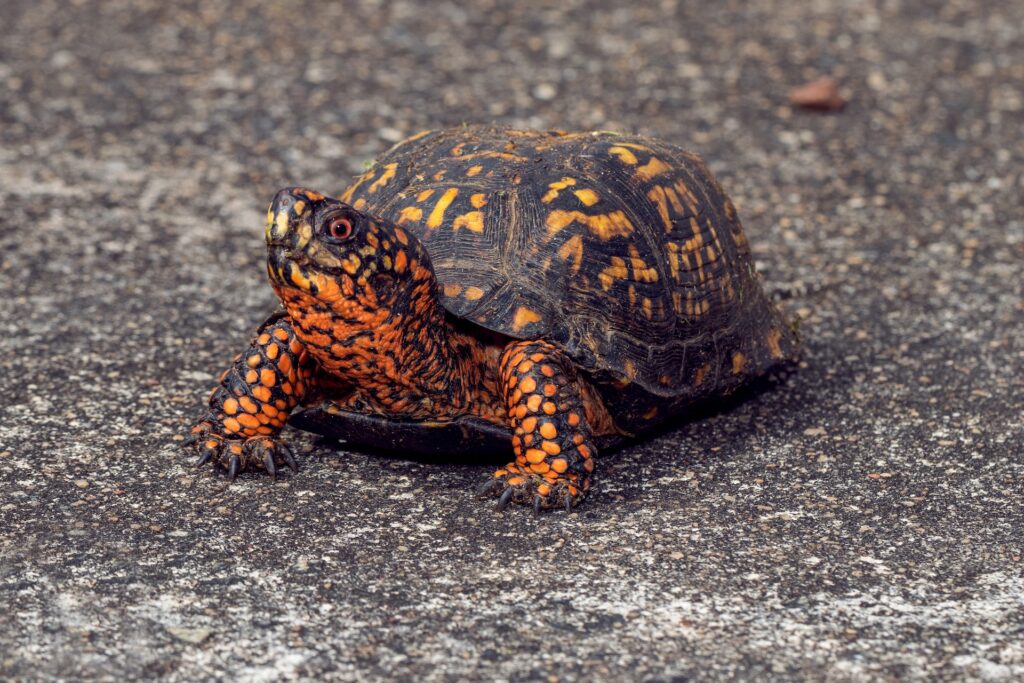
Where to plant mayapples
The mayapple is considered an ephemeral (lasting for a very brief time). The plants emerge and begin growing before leaves have fully develop in the overhead tree canopy. Once flowering and fruiting are complete, the mayapple then senesces (ages and degenerates) and is dormant again by mid-summer. Some articles suggest mayapples do not like competition from other plants and in their early dying-off process, leave behind a barren plot of soil. I have not found that to be the case in my landscape. By the time the mayapples at the edge of my wood line have faded back, the ground is already beginning to fill in with lush ferns and various understory plantings. Because it is an early season plant, my mayapple returns each spring without competition.
Mayapples prefer part- to full-shade as well as rich, moist soil. Planting at the edge of a wood line is ideal as the falling autumn leaves naturally provide a deep cover of organic matter. Also consider that the sunnier the location, the earlier the plant will go dormant. Mayapples spread by rhizomes (think of an undergound mat), and can form large, dense colonies in damp open woods, shady fields, riverbanks and roadsides.
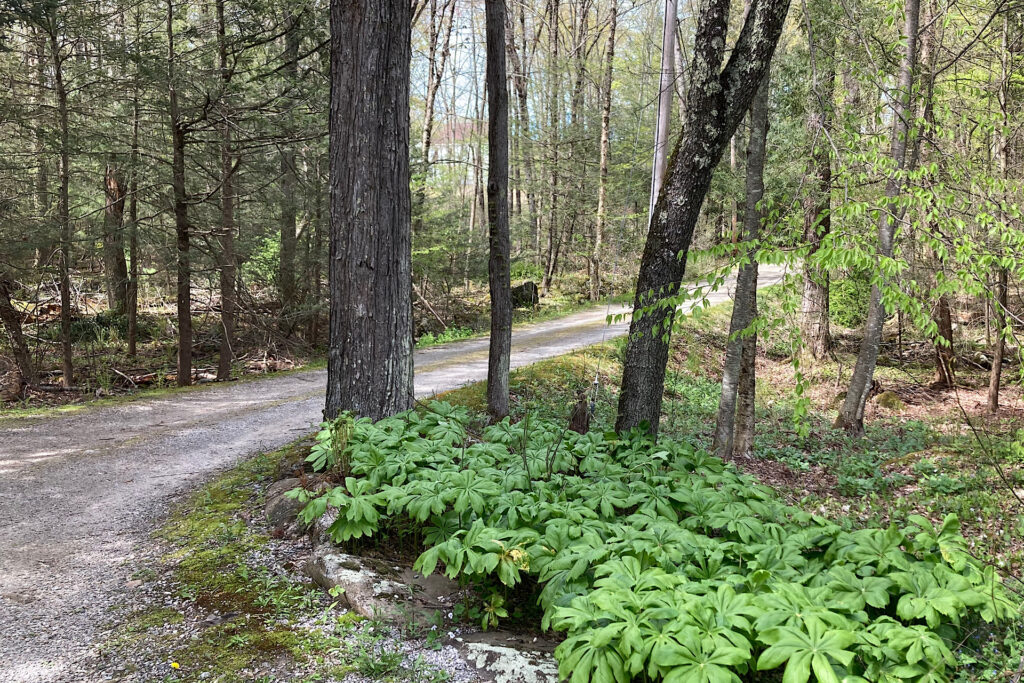
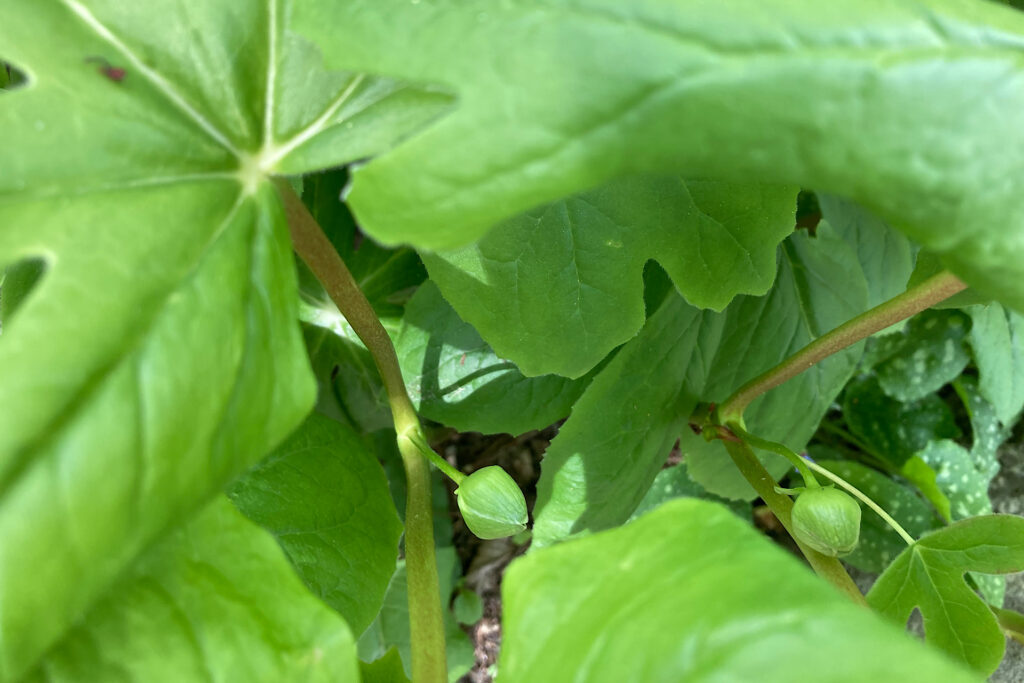
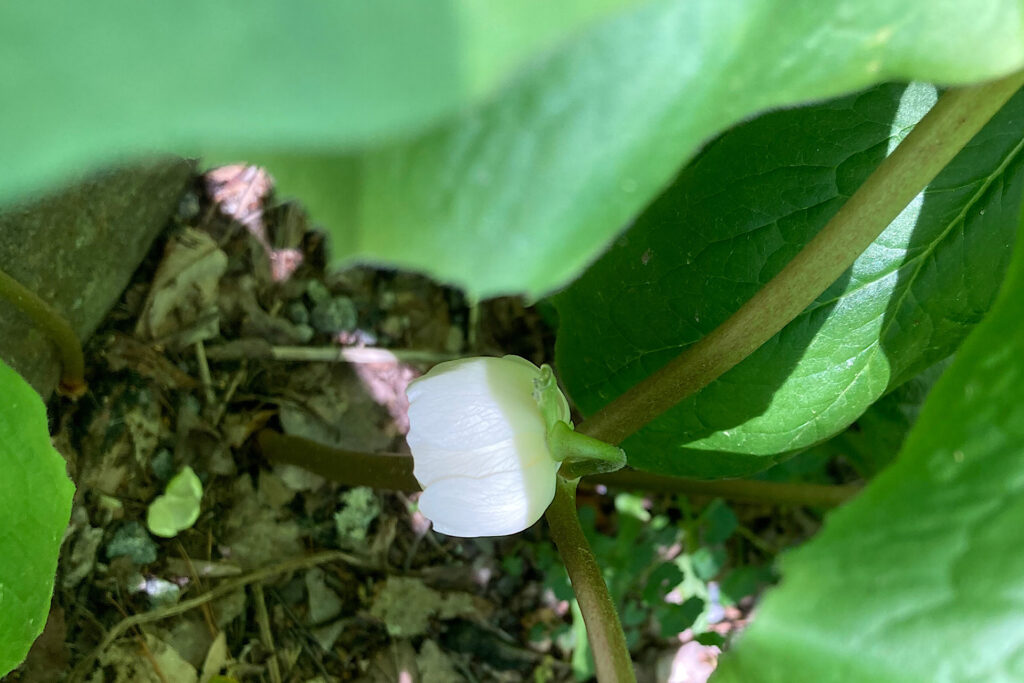
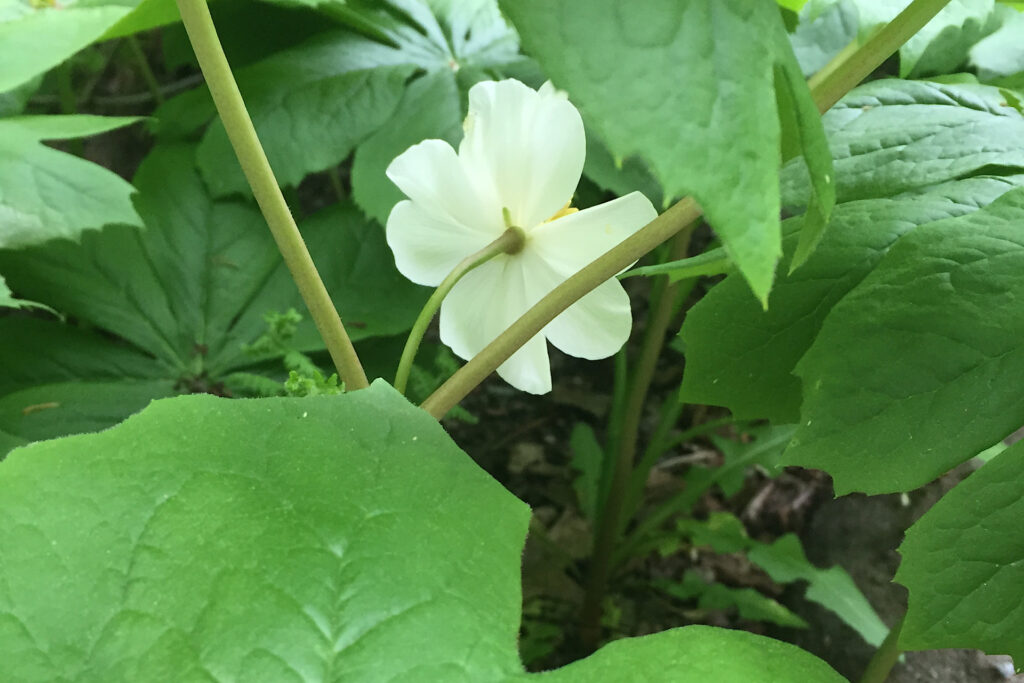
Seeding & propagation
If you are considering adding mayapples to your landscape, you can try planting bareroots in the fall. Prairie Nursery suggests early fall while the soil is still warm, or in early spring. They advise that “planting in early fall allows roots time to establish before winter, and gives the plants a stronger start the following spring.“
Established plants can also be propagated by dividing roots when the plant is dormant in late summer and early fall.
Mayapple can also be grown from seed, but seeding is a little trickier. The seeds require cold-stratification. In layman’s terms: you’ll need to store the seeds in a cold-moist environment for approximately 3 months prior to planting. I have done this successfully with cone flower seeds by layering them between two damp paper towels in a sandwich bag in the refrigerator. Interestingly enough, studies indicate mayapple seeds transported by those box turtles mentioned above have a 40% higher germination success than those simply left on the ground.
Whether you choose to purchase live/bareroot plants from a nursery, or divide out a few from a friend’s woodland garden….or rely on the trusty box turtle to deliver for you; you won’t be disappointed by the magic of mayapples!
